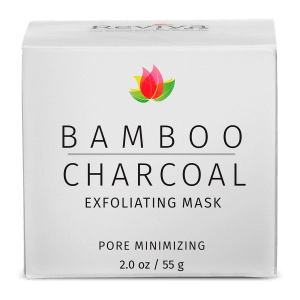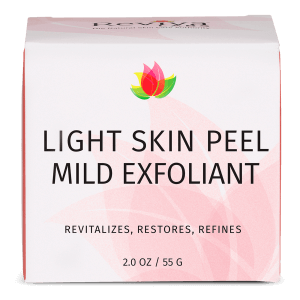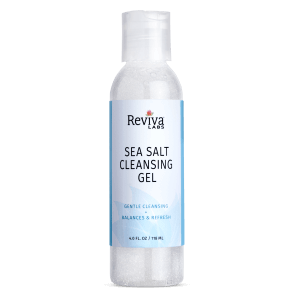When it comes to skincare, exfoliation is a crucial step that helps remove dead skin cells, revealing fresher, smoother skin underneath. The exfoliation process can be achieved through two primary methods: chemical and physical exfoliation. Each method has its unique mechanism of action, benefits, and considerations. As we explore the nuances of chemical and physical exfoliants, it’s essential to consider personal skin types, sensitivities, and skincare goals to make an informed decision about which exfoliation method might be the best fit for you.
The Basics of Chemical Exfoliation
Chemical exfoliants work by dissolving the bonds between skin cells, allowing the dead cells to be washed away more easily. These products typically contain acids like alpha-hydroxy acids (AHAs), beta-hydroxy acids (BHAs), and polyhydroxy acids (PHAs). AHAs, such as glycolic and lactic acid, are water-soluble and effective in improving skin texture and reducing the appearance of fine lines and wrinkles. BHAs, like salicylic acid, are oil-soluble, making them particularly beneficial for those with oily or acne-prone skin as they can penetrate deeper into the pores to clear out excess sebum and dead skin cells. PHAs are considered a gentler option, suitable for sensitive skin, providing exfoliation with less irritation.
One of the key benefits of chemical exfoliants is their ability to provide a uniform exfoliation. Unlike physical exfoliants that rely on manual scrubbing, chemical exfoliants work evenly across the skin’s surface, reducing the risk of micro-tears or uneven exfoliation. This uniformity can be particularly beneficial for individuals with sensitive skin or those looking to target specific skin concerns such as hyperpigmentation or acne.
Physical Exfoliation Explained
Physical exfoliation involves the use of a scrub or tool to manually remove dead skin cells. This method can include a variety of materials such as microbeads, natural grains, brushes, or even cloths. The immediate effect of physical exfoliation is often visible; skin feels smoother to the touch right after use. However, the mechanical action of physical exfoliants can sometimes be too harsh, especially for sensitive skin types, leading to irritation or micro-tears in the skin if used too vigorously or too frequently.
Despite the potential for irritation, physical exfoliants have their place in skincare routines. They can be particularly effective for those with thicker, more resilient skin or for individuals looking to remove physical debris such as flaky skin or residual makeup. Moreover, the tactile process of physical exfoliation can be satisfying for many, offering a sense of immediate cleanliness and renewal.
Comparative Insights
The debate between chemical and physical exfoliants is not about which is universally better but rather which is more suited to an individual’s skincare needs and preferences. Chemical exfoliants are often recommended for their ability to penetrate deeper into the skin and offer targeted benefits such as reducing acne or evening out skin tone. In contrast, physical exfoliants are praised for their immediate results and simplicity of use.
A 2017 study published in the Journal of Dermatological Treatment found that a combination of chemical and physical exfoliation methods might offer synergistic effects, improving skin texture and complexion without significantly increasing skin irritation. This suggests that for some, using both types of exfoliants, albeit not simultaneously but incorporated differently into their skincare routine, could maximize benefits.
Considerations for Sensitive Skin
For those with sensitive skin, the choice between chemical and physical exfoliants becomes even more critical. Chemical exfoliants, particularly AHAs and PHAs, can be formulated in lower concentrations to provide gentle exfoliation without causing undue irritation. In contrast, physical exfoliants might be more challenging to use without causing redness or discomfort, particularly if the skin is prone to reactions or if the physical medium is too abrasive.
It’s also worth noting that over-exfoliation can lead to a compromised skin barrier, regardless of the method used. Symptoms of over-exfoliation include redness, sensitivity, dryness, and even acne breakouts, as the skin becomes more susceptible to bacteria and environmental stressors. Thus, moderation and careful consideration of the skin’s tolerance are crucial.
Personal Preferences and Lifestyle Considerations
Ultimately, the choice between chemical and physical exfoliants may come down to personal preference and lifestyle considerations. Some individuals may prefer the simplicity and immediacy of physical exfoliants, enjoying the tactile experience of using a scrub. Others might prioritize the long-term benefits of chemical exfoliants, appreciating their ability to target specific skin concerns over time.
Moreover, lifestyle factors such as exposure to the sun can influence the choice of exfoliant. For example, AHAs can increase the skin’s sensitivity to the sun, requiring diligent use of sunscreen to protect against UV damage. Those with active outdoor lifestyles may need to consider this when incorporating AHAs into their skincare routine.
Navigating the Choice
Deciding whether chemical or physical exfoliants are better suited to your skincare routine involves a nuanced understanding of your skin type, concerns, and preferences. It may also involve some trial and error, as you observe how your skin responds to different types of exfoliation. Consulting with a dermatologist can provide personalized advice and recommendations, helping to ensure that your exfoliation method enhances your skin’s health and appearance without causing harm.
Whether you lean towards the gentle, targeted action of chemical exfoliants or the immediate satisfaction of physical scrubbing, the goal remains the same: to reveal healthier, smoother skin. By making informed choices and listening to your skin’s needs, exfoliation can be a rewarding part of your skincare routine, contributing to your skin’s radiance and vitality.












